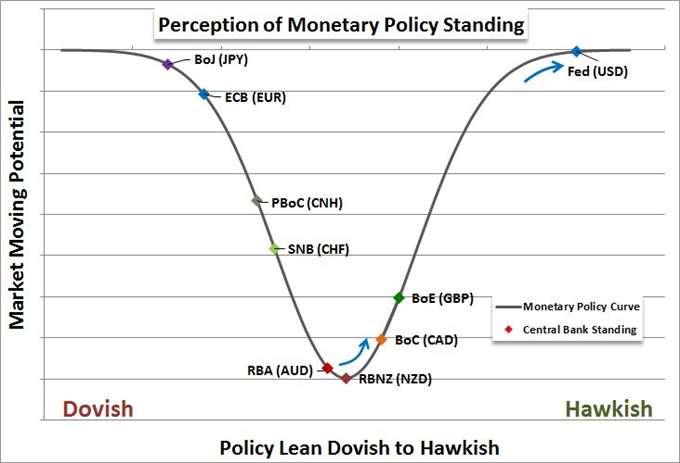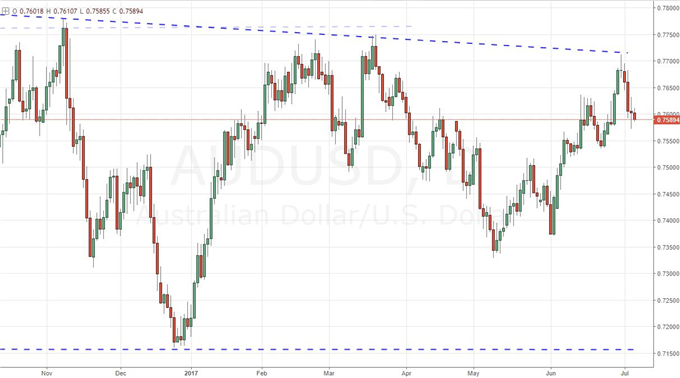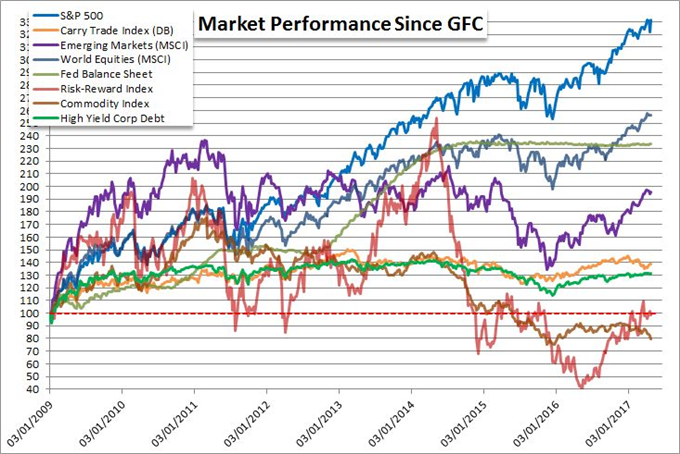Talking Points:
- Carry trade promotes is the 'dividend trade' of the FX world as traders yield advantage for income returns
- While the Australian and New Zealand Dollars both carry the highest absolute yields, the Dollar and Euro have outperformed
- At these extreme low rates of return universally, a commitment to raise rates is more important than actual standing
See how the DailyFX Analysts' 3Q forecasts for the Dollar, Euro, Pound, Equities and Gold are shaping up in the DailyFX Trading Guides
What drives FX traders' appetite for returns. The 'carry trade' is as ubiquitous to currency trading as investing for high dividends is for equities. Yet, the dynamics to both have been warped by the extremely low rates of return after years of easing as well as the subsequent desperate reach for return that has followed in its wake. Given the dynamics that have driven the markets to drive up benchmark equity indexes like the S&P 500 to record highs over the years and a shift of capital further out the risk curve to the likes of high-yield fixed income among other atypical assets, it would seem as if the highest yielding currencies would be clear outperformers on the FX scale. In reality, the key players in the carry game over the decades have struggled - particularly relatively to low yield and deeply liquid counterparts like the Dollar and Euro.
A key distortion to the market's pursuit of FX returns is the reality that actual yields are at or near historical lows on a global basis. Popular carry currencies from both the developed and emerging market ranks from a decade ago currently sport yields that is unprecedented compared to their own historical standards. Further, on a differential basis, the return provided pairs based on these currencies is low even compared to the complacency-deflated risks of the current market condition. In such circumstances, absolute yield matters less than the realized and expected change in the backdrop rate of return. That is why the Dollar has generally outperformed for the past five years - not because of its high yield, but rather due to the fact that it is actually rising. Instead of the passive carry, traders are looking to take advantage of the expected inflows related to marginal increases to the benchmark. It is this same dynamic that has seen the Euro rise recently. While the world's second most liquid currency has yet to see an actual tightening of the reigns, the ECB seems closer to turning a corner than key carry currencies.
The RBA rate decision reminded us of the score when it comes to yield differentials and the course monetary policy moving forward. The Australian central bank held its benchmark rate unchanged at a rather generous level of 1.50 percent. Yet, instead of cheering the existing advantage, traders decried the lack of progress relative to the Fed, Bank of England, Bank of Canada and even the European Central Bank. Reminded that the RBA is falling behind the curve, pairs like AUD/USD, EUR/AUD, AUD/CAD and AUD/JPY saw the higher yielding player suffer. The same circumstances have built up around the New Zealand Dollar as the RBNZ has so far held off of a return to tightening. If these currencies do not at least keep pace with the change in global policy, they risk structural loss of rank in addition to short term pain relative to their ascending counterparts. We discuss the future of the currency's at the other end of the yield spectrum in today's Strategy Video.



To receive John’s analysis directly via email, please SIGN UP HERE





